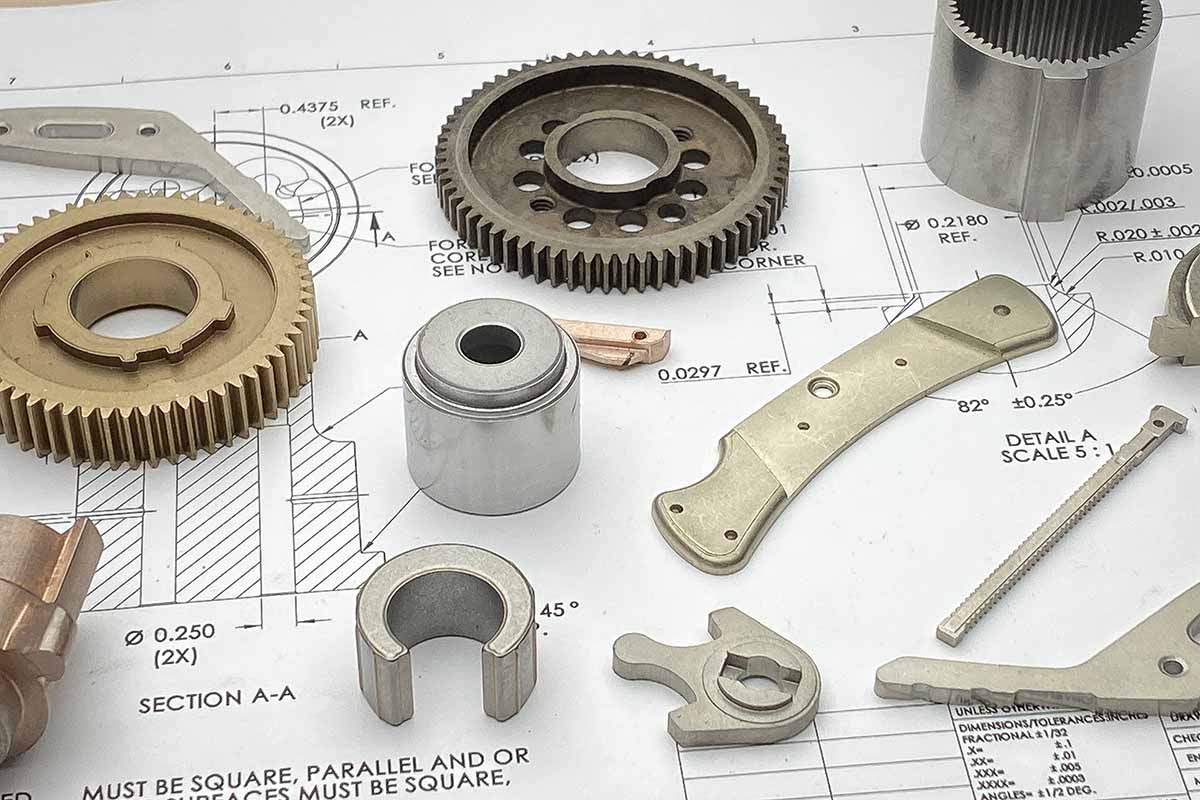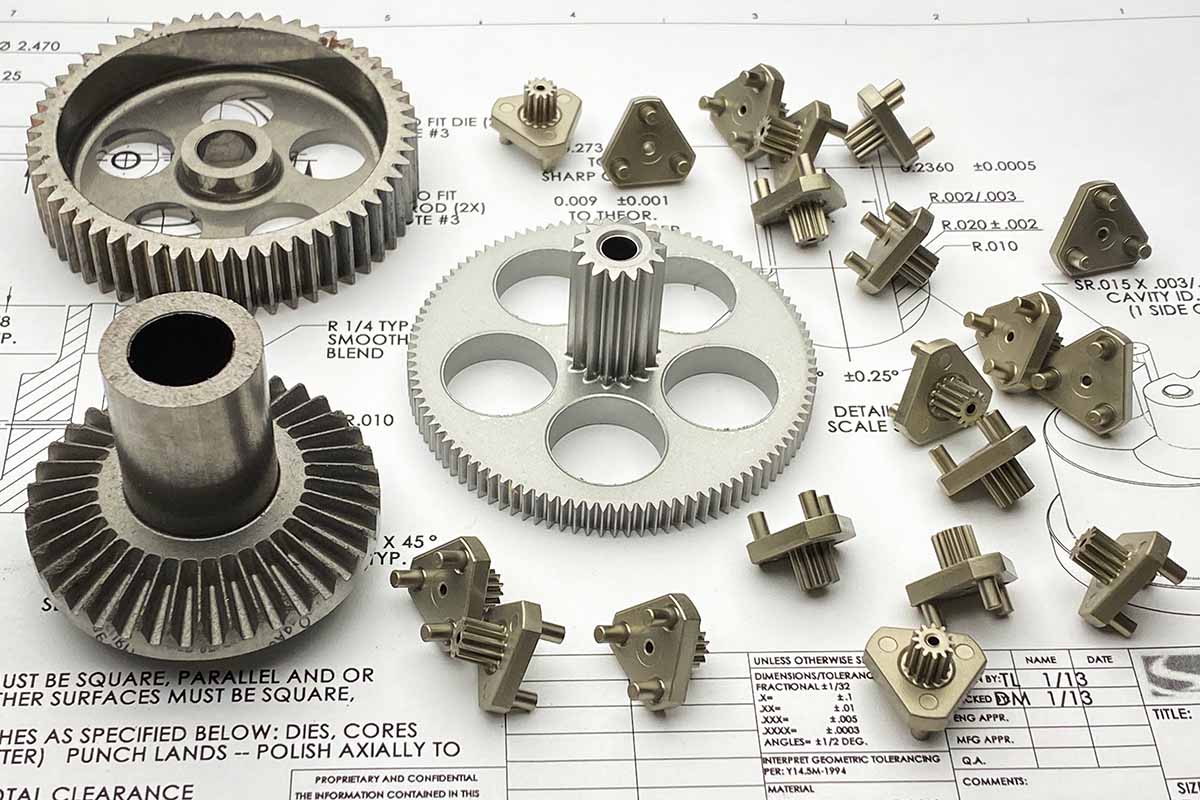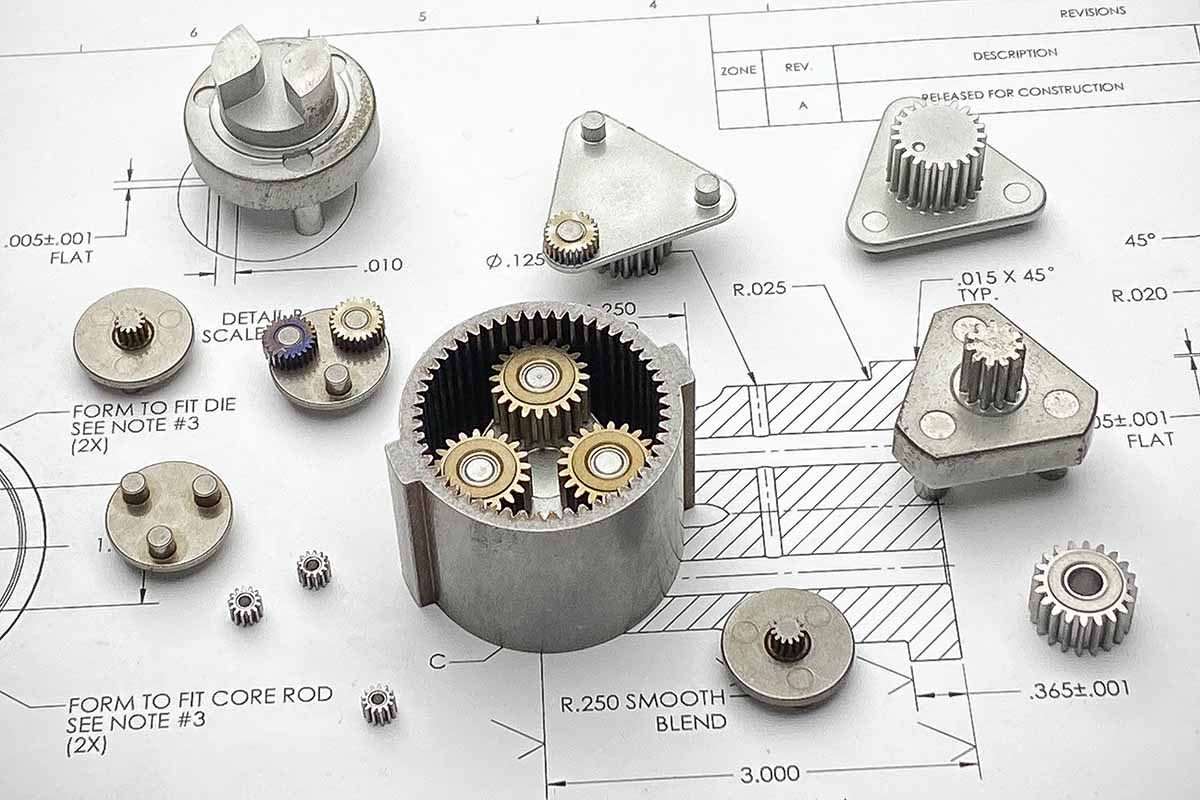In today’s world, manufacturers are always searching for better-performing metal components. They want more freedom while designing and of course in a cost-effective way. While traditional methods of casting fail to do that, metal powder molding can be an effective way to drive their products forward.
What is Metal Powder Molding Process?
Metal Powder Molding is a conventional powder metallurgy process of forming parts from metal powders. This process includes the mixing of metal powder with alloy powders, compacting the powder mixture in a die, and then heating or sintering the mixture to get the final shape. Generally, the powder is metal particles under 200 μm. For metal powder molding, powders are prepared by mashing, grinding, or electrolytic deposition. The most frequently used powders are ferrous-base and copper-base materials.
The powder metallurgy or P/M process involves three basic steps:
- Powder blending: The metal powders incorporate binders, lubricants, or additives to produce a homogeneous mixture. Additives or lubricants help to improve wear resistance, machinability, and lubricity of the part. The blending process can be dry or wet based on the kind of powder molding process and the demands of the part.
- Compacting: This step involves compacting and pressing the powder mixture into the desired shape or die at pressures typically as high as 965 MPa (70 tsi) or as low as 138 MPa (10 tsi) depending on the part’s density requirement.
- Sintering: In sintering, the compact mixture of powder transfers through a controlled protective atmosphere to avoid oxidation. The temperature must be below the melting temperature of the principal component of the powder mixture. To provide shape to the molded parts, specified pressure applies to improve the final properties. The sintering process can also be done without applying any pressure to get porous materials.
Advantages of using the P/M Process?
The high-precision metal powder molding process generates parts with high dimensional accuracy. It facilitates the manufacture of unique or complex shapes and provides controlled porosity for the self-lubrication of the parts. The raw material utilization in the P/M process is very high (over 95%) and also the energy consumption is very low for the finished parts.
The metal powder molding parts have several usages such as:
- Cutting tools & dies
- Automobile parts
- Power tools
- Oil and gas drilling heads
- Hydraulic assemblies
- Bearings and bushes
- Machinery parts
ASCO Sintering is one of the renowned US-based manufacturers of engineering parts. At ASCO, we work with customers to ensure the most reliable and robust P/M solution. We have over hundreds of different metal powder alloys to customize powders to fit the customers’ needs. To get your desired part in 1 minute, just click here.





